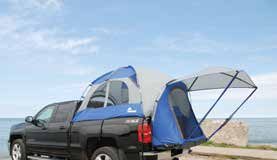RetailNext reported a decrease in U.S. store sales of 4.7 percent on a 5.1 percent decline in store traffic during the Thanksgiving and Black Friday weekend. The firm say exponential growth in mobile and “Holiday Creep” contribured to the lower results.
“The sales and traffic numbers only tell a partial story as retailers with strong digital businesses saw an uptick in the online channels that will positively impact the overall performance of the brand,” said Shelley E. Kohan, vice president of retail consulting at RetailNext. “The weekend continued to demonstrate the emergence and importance of mobile shopping, and shoppers increasingly used digital devices to shop brands, research products, compare pricing and make purchases.”
The overall performance of physical stores was more positive than the trends established leading up to the holiday weekend. While sales were down 4.7 percent, they were 1.5 to 7.5 points better than the five preceding months, and the decline in store traffic was only half of the monthly declines reported earlier in the year. Sales per Shopper (SpS) was up 0.3 percent over the holiday weekend, driven mostly by a 3.1 percent increase in Average Transaction Value (ATV). Conversion slipped slightly by 0.5 percent, in part due to the early Cyber Monday sales promotions started over the weekend, as well as savvy shoppers recognizing the end of the weekend does not denote the end of holiday price discounts and promotions.
The strongest performances for the weekend came from the Midwest and Northeast regions, where pent up shopping demand from the previous two months helped bring in shoppers. Both regions experienced positive SpS growth through increases in ATV. A common theme among all regions was the drop in conversion, which ranged from 0.1 to 0.6 percent.
“The results for physical retail are generally positive when considering the growing influence of digital shopping, particularly in the mobile channel,” continued Kohan.
“Over the holiday weekend, there were patterns of strong results for retailers with less effective digital channels, and they outperformed on the brick-and-mortar side of the business. Of course, the flip side was true for brands with strong digital presences and who offered a seamless multichannel experience, and it’s those brands who have a head start into retail’s most important season.”
Custora, meanwhile, reported e-commerce revenue up 16.2% on Cyber Monday 2015 compared to Cyber Monday 2014, making it the biggest day in US online shopping history. For the full holiday weekend (Thanksgiving day – Cyber Monday), revenue growth over 2014 came in strong at 16.4%. The strong growth overall for the weekend was driven by mobile shopping (Apple devices in particular), email marketing, and Google search, said the firm.
Mobile Shopping accounted for over a quarter of online shopping on Cyber Monday 2015 – 26.9% of orders. That’s a jump from only 23% on Cyber Monday 2014. For the full holiday weekend, mobile shopping accounted for 32.1% of orders, up from 26.4% over the same period in 2014. Black Friday was “Mobile Friday,” with mobile accounting for 36.1% of orders, up from only 30.3% on Black Friday 2014.
Email Marketing was the channel that drove the most online sales on Black Friday. While usually lagging behind online search (free and paid), on Black Friday email marketing was the primary channel, driving 25.1% of sales. Beyond email, 21.1% of sales originated through free search, and 16.3% through paid search on Black Friday.
Social media (including Facebook, Twitter, Instagram, and Pinterest) was not a meaningful channel during the holiday weekend, driving only 1.6% of e-commerce orders. The same applies to Cyber Monday, where social media networks drove 1.5% of orders.







